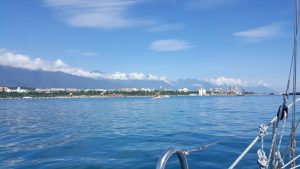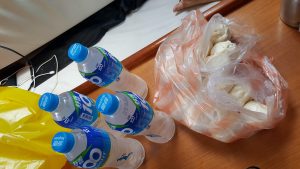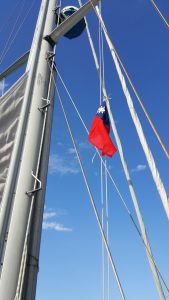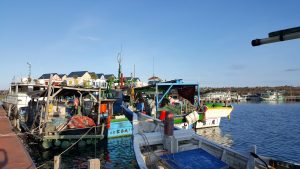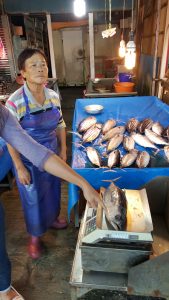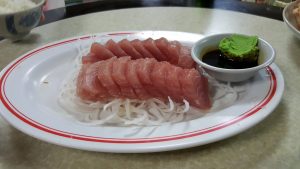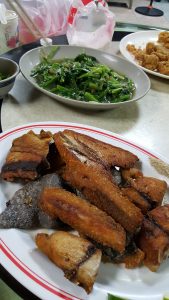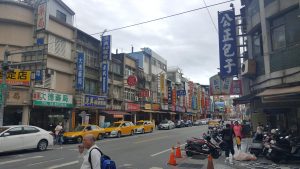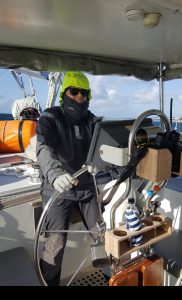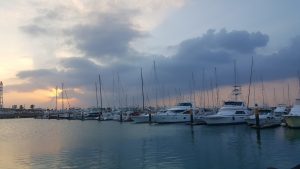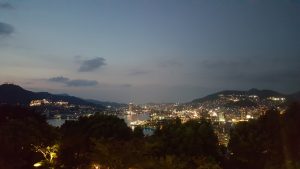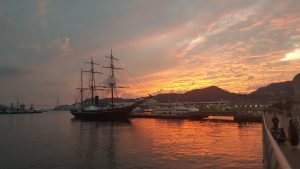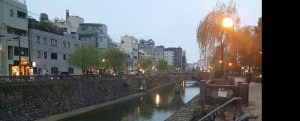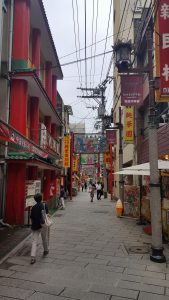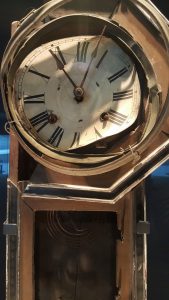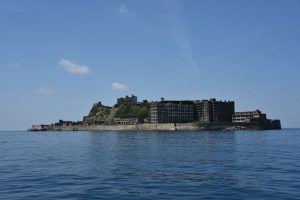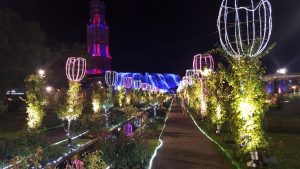We have been making a lot of progress in the past couple of weeks, meaning also that we’ve been out sailing a lot. We are, in fact, no longer in Japan at all. After Okinawa, we sailed for two days to get to Ishigaki. We only stayed in Ishigaki for two nights (enough time to visit our favourite Japanese BBQ restaurant), because we saw a quick weather window to Taiwan. It was with some sadness that we said goodbye to the city that had seen our arrival in Japan in May, but at the same time we were excited to have the chance to finally visit Taiwan. Taiwan had been our original first destination, but we had to switch it to the Philippines to have a better wind angle during the relentless northeast monsoon (although that didn’t quite work out in the end).
We arrived in Hualien on the east coast of Taiwan some ten days ago. The weather and seas have been getting rougher the closer southwest we have sailed, and the leg from Ishigaki to Hualien was no fun with big and confused seas up until the morning when it finally calmed down and the sun came out. We sighed with relief when we got close to Hualien port, although we did have some concerns about the port clearance (quarantine, immigration and customs) as nobody had replied to the emails that we sent to the authorities beforehand. Also, when we attempted to hail the port authorities by VHF radio a couple of hours before we reached port, nobody answered. In the end, once we were close enough to the coast to get mobile phone reception, we called the port authorities by phone, and finally reached the person who was supposed to be listening to the radio. After that, the conversation continued over radio waves…
It was fairly easy to identify the location that the authorities wanted us to dock at, as there was a large group of official-looking people waiting for us there. Particularly the coast guard officials were easy to spot in bright orange overalls. However, what was not easy was to dock in that location, since it was a concrete pier intended for far larger boat and the officials wanted us to dock in a manner in which they could easily board the boat along steel stairs protruding from the dock. There wasn’t really anywhere reasonable to tie our boat (the distance between the dock bollards was far too large), but we finally managed by tying some of our lines to a couple of short metal poles sticking out from the ground. We were surprised that all the officials just stood there and let us struggle to get the boat tied and settled without really helping us. However, we figured that they had perhaps been told not to touch the lines of any boats for fear that someone might later claim that the boat had been damaged by their actions – or perhaps they were just too used to commercial vessels with large crews to realise that a small sailboat might need some help on that massively oversized dock? Either way, once we managed to tie up the boat, the officials were most courteous and friendly. The quarantine official took our temperature, and the coast guard officials boarded the boat to check it out (we are not sure what they were looking for). Customs and immigration officials were present too, but Mr Finn still had to go to their office to complete the paperwork. The officials had called a local sailor to help us with the process; he drove Mr Finn to the right location and even filled in some papers for us (later in the week, the same gentleman helped us with the departure procedure – it was fantastic to have someone volunteering to help us and we are very grateful for his efforts). While Mr Finn was away for the port clearance upon our arrival, some of the officials turned up at the boat and handed me and the girls drinks and a bag full of lovely Taiwanese dumplings for lunch. That was truly considerate and kind from them, and completely unexpected.
Hualien port is a working port, and recreational vessels are apparently not allowed in the fishermen’s docking area. The rest of the port consists of the same huge concrete walls and sparsely placed bollards that we had to deal with upon arrival and is subject to wake from passing vessels. We were very happy to be offered to dock on a floating pontoon at the back of a boatbuilding hangar by the hangar’s owners, even though the berthing fee wasn’t exactly cheap. We had access to water and – for the first time since the Philippines – also shore power, since the hangar had 220 V power (Taiwan uses 110 V power, but the hangar happened to also have 220 V). All of our time in Japan, we have had to use our generator for power, because nowhere has there been 220 V electricity, which is what we need. Therefore, it was great to be able to use all our electronic equipment such as the microwave, the air conditioner, the vacuum cleaner and the dehumidifier without having to listen to the loud noise of the generator. We could finally also charge our phones, computers and Kindle readers, our electric toothbrush and other smaller electric items all at once without the noise. These are luxuries that one takes for granted living on land, but that one comes to really appreciate on a boat.
Hualien city itself is not much to write about, but the surrounding mountains are beautiful, and we found people in Hualien to be very friendly. When we ventured out to town on foot (a foolish decision when it was blasting 30 knots of wind and sand and dirt was flying everywhere), two drivers stopped to ask us if we were ok. One helped us call a cab, the other one offered to give us a ride for free (at that point the taxi was already on its way). Every person that we spoke to in town would go out of their way to help us and show us the way to where we were going.
We probably would not have left Hualien yet weren’t it for the fact that the weather windows to continue to Hong Kong are becoming scarcer as the days pass (until they start to reappear in the spring time, but that is too late for us!). It looked like there might be a window to sail to Hong Kong early this week, so despite the sailing forecast from Hualien to Kenting on the south coast of Taiwan not looking too great, we decided to make the one-night journey last Tuesday. I’ll write about that and Kenting in the next blog post (the weather window to Hong Kong narrowed down, so we will be here in Kenting still for at least a few days).
